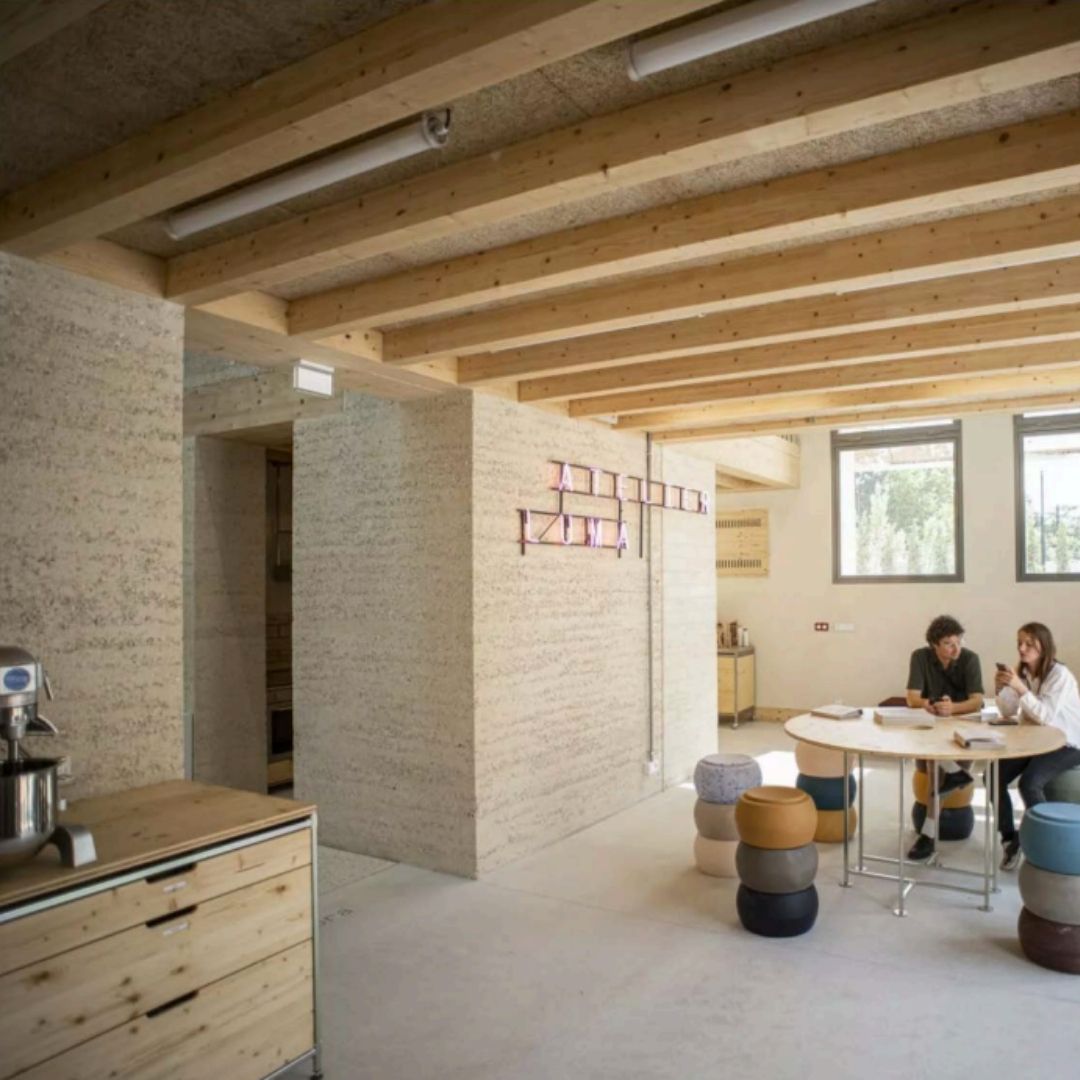Project showcase
The Clay Community, Hambrook, with Tuckey Design Studio, Lehm Ton Erde and Stonewood Builders

The Clay Community proposed for Old Gloucester Road in Hambrook, consists of 30 houses in semi-detached or terraced arrangement, constructed from prefabricated rammed earth blocks. Units would be built using modular oak timber frames and interior thresholds to accommodate expansion. The project will house approximately 120 people on the 2ha site, providing terraces, parking and community greenspaces.
Who is on the project team? (designer, consultants, etc)
Jonathan Tuckey (Director, Jonathan Tuckey Design), Molly Wheeler (Project lead architect, Jonathan Tuckey Design), Martin Rauch (rammed earth specialist consultant, Lehm Ton Erde), Matt Aitkenhead (Stonewood Builders)
Describe the context of this project, its neighbourhood and people.
onathan Tuckey Design, in collaboration with Lehm Ton Erde and Stonewood builders, have an ambition to build housing typologies based on circular economy principles. Housing that inspires change in how we, societally, think about making and living in communities. The Clay Community is a planned rammed-earth housing scheme located on Old Gloucester Road in the village of Hambrook, Gloucestershire. The site has a clay soil profile ideal for rammed earth construction, close to numerous building waste sites where aggregate can be combined into the material mix. Hambrook is a commuter settlement, with a population of 137 (2018 census) with 78 economically active. Despite its modest size, the settlement is near health, educational and wellbeing facilities thanks to neighbouring towns and cities. The development consists of 30 houses in semi-detached or terraced arrangement, composed from prefabricated rammed earth blocks which can be manufactured locally and assembled expeditiously. A combination of 1 and 2 bedroom flats will sit alongside 2 and 3 bedroom houses, lining streets that will be accessible and inclusive. Our design references the local Georgian terraced vernacular, utilising the philosophy of constructing with readily available materials; to imagine a new typology defined by local craft. Motifs such as bay windows and door canopies are streamlined and implemented in a contemporary order. The prefabricated blocks lend the scheme to be adapted across the UK as a solution to how we design social housing in a considered, regenerative manner.
Please describe your approach to this future place and its mix of uses. How will it function as a vibrant place?
Hambrook is a commuter village, within touching distance of Bristol, Winterbourne and Frenchay. Our approach intends to utilise this axis, adding to what is already a thriving community. A nationwide housing shortage has resulted in increasing stress on our urban environments and a moment of crisis is often the best time to instigate change. Our design prioritises relationships between house and street, with a generous overhanging canopy protruding from the front terraced elevations. Delicate rainwater downpipes appear to elegantly prop the roof, articulating a rhythmic colonnade. This provides a social space for residents to gather and sit outside their houses whilst being protected from the elements; built in planting beds and benches further contribute to this bond to communal gardens and walkways. The homes are designed to evolve with families over time, with modular internal oak timber frames and interior thresholds accommodating expansion between units should additional bedrooms be required. Inexpensive materials are elevated into beautifully crafted components that sit in concert to the wooded, semi-rural context. Cedar shingles blur the transition between buildings and surrounding forestry, while the rammed earth inextricably roots the volumes to their plot.
What is the environmental impact of the project? How will the carbon use and material impact of the development be mitigated? What is the sustainability strategy?
The homes will be composed from unstabilised rammed earth; meaning that no cement is used within the mix. This makes for a building material that is circular, standing for generations and yet could be ploughed straight back into the ground. Clay rich earth is abundant across the UK, particularly in the south/ southeast, reducing the need for transportation costs. The benefits of rammed earth are substantial, with the material being non-toxic, fireproof, moisture controlling, sound absorbing and efficiently performing thermal mass. Rammed earth construction has the lowest carbon footprint, and the compositions load bearing capacity makes it an ideal material for structural walls of new build houses. One example rammed earth recipe uses non-porous aggregate, that can be collected from local landfill or demolition sites, mixed with clay as the binding agent in the proposed quantities: 50% waste concrete aggregate 25% limestone gravel (or other local nonporous stone) 25% site clay. The scheme intends to utilise local craftmanship and materials rather than importing. A ‘Fabric first solution’ means we are designing homes that are very well insulated from the outset and should not rely on heating to achieve a comfortable environment, reducing energy consumption. Internal rammed earth allows the building to be externally wrapped with an uninterrupted layer of insulation. Floor joists can be fixed without puncturing the insulation zone, which avoids risks of thermal bridging.
Festival of Pineapples
24-26 February 2026
Pineapples prize giving night
April
Pineapples at Festival of Place
10 June 2026
© The Pineapples - Tweak Ltd. 124 City Road, London, EC1V 2NX. Tel: 020 3326 7238




